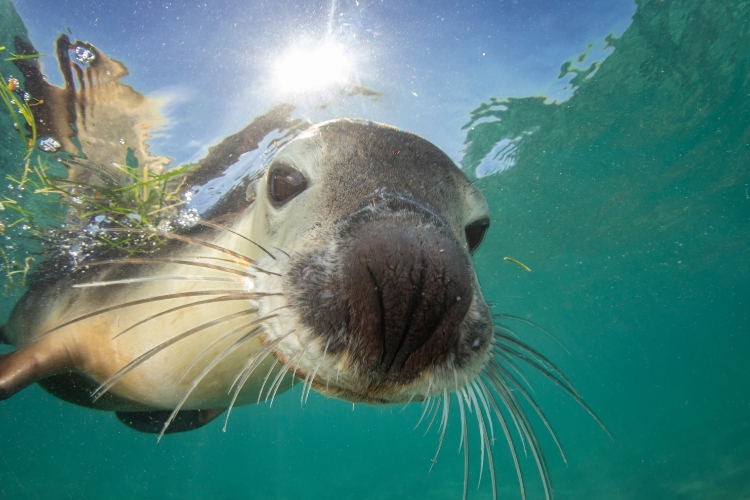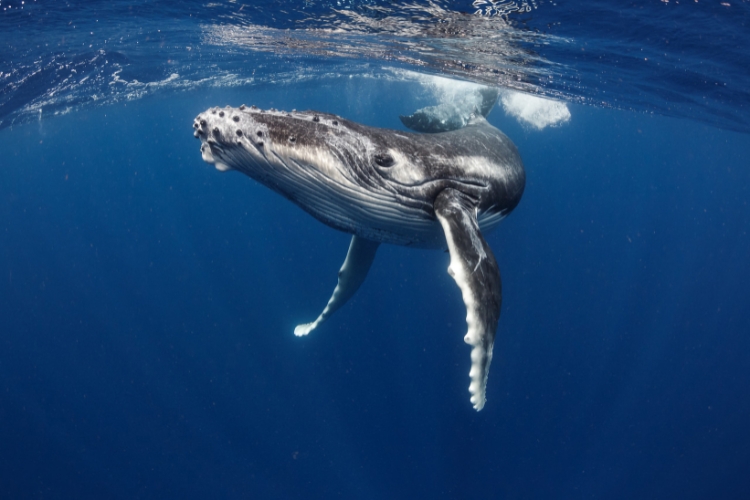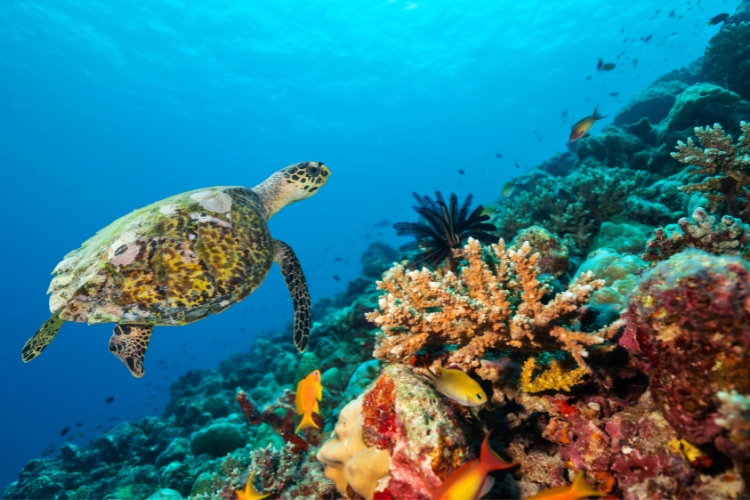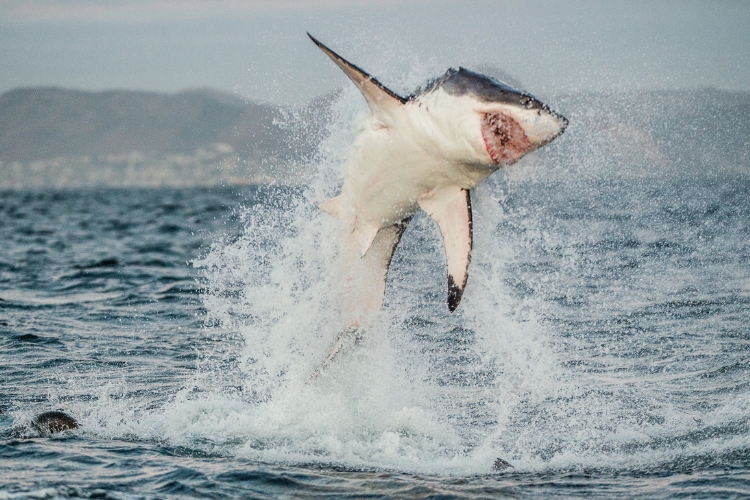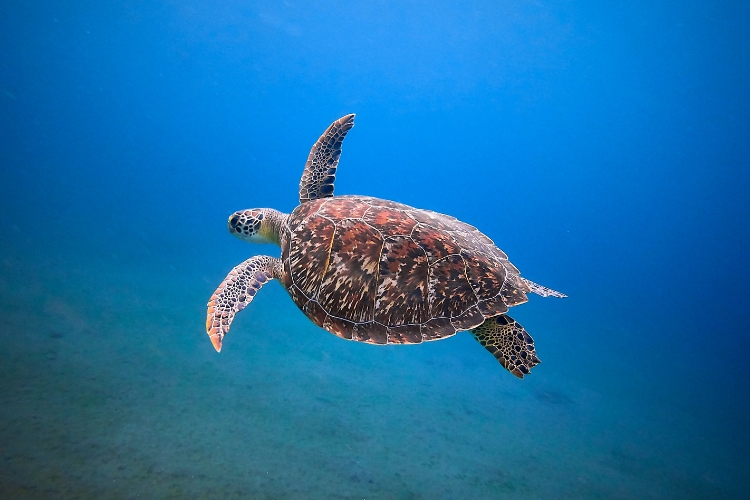The vast expanse of the world’s oceans is home to a remarkable array of marine life, each species uniquely adapted to thrive in the depths or along the coastlines.
From the graceful whales that navigate the open waters to the vibrant coral reef dwellers, sea animals continue to captivate our imagination and curiosity.
In this blog article, we will explore about the captivating world of sea creatures, uncovering fascinating facts that will leave you in awe of the wonders beneath the waves.
Whales: Gentle Giants of the Sea
When it comes to sea animals, whales are undoubtedly among the most iconic and beloved creatures. These massive mammals have captured the hearts of people worldwide with their sheer size, intelligence, and social behaviors.
Fascinating Whale Facts
- The blue whale is the largest animal known to have ever existed on Earth, with some individuals reaching lengths of over 100 feet and weighing up to 200 tons.
- Humpback whales are renowned for their impressive acrobatic displays, breaching the surface and slapping their pectoral fins on the water in a behavior known as “whale watching.”
- Sperm whales are among the deepest diving mammals, capable of reaching depths of over 3,280 feet (1,000 meters) to hunt for giant squid and other prey.
- Killer whales, or orcas, are highly intelligent and social animals that live in close-knit family groups called pods, communicating through a complex system of clicks, whistles, and pulsed calls.
Coral Reefs: Underwater Rainforests
Coral reefs are often referred to as the “rainforests of the sea” due to their incredible biodiversity and importance to marine ecosystems. These vibrant underwater landscapes are home to a vast array of sea creatures, ranging from colorful fish to intricate invertebrates.
Fascinating Coral Reef Facts
- Coral reefs are formed by colonies of tiny animals called coral polyps, which secrete calcium carbonate to build their skeletons.
- The Great Barrier Reef, located off the coast of Australia, is the largest coral reef system in the world and can be seen from outer space.
- Clownfish, made famous by the movie “Finding Nemo,” have a unique symbiotic relationship with sea anemones, living among their tentacles without being stung.
- Parrotfish are essential for the health of coral reefs, as they consume algae and excrete sand, which helps to replenish the reef’s structure.
Sharks: Misunderstood Predators
Sharks are often portrayed as fearsome predators, but these ancient creatures play a crucial role in maintaining the balance of marine ecosystems. Despite their reputation, most shark species pose little threat to humans and are fascinating animals worthy of our respect and conservation efforts.
Fascinating Shark Facts
- Sharks have existed on Earth for over 400 million years, predating even the dinosaurs.
- The whale shark is the largest fish species in the world, growing up to 40 feet in length and weighing over 20 tons.
- Great white sharks are known for their impressive size and hunting abilities, with some individuals reaching lengths of over 20 feet.
- Hammerhead sharks have a unique head shape that provides them with superior sensory perception and maneuverability in the water.
Sea Turtles: Ancient Mariners
Sea turtles are among the most ancient and resilient creatures on the planet, with some species having existed for over 100 million years. These remarkable reptiles play a vital role in maintaining the health of our oceans and coastal ecosystems.
Fascinating Sea Turtle Facts
- Sea turtles migrate thousands of miles between feeding and nesting grounds, relying on Earth’s magnetic fields for navigation.
- Leatherback sea turtles are the largest living turtle species, weighing up to 2,000 pounds and capable of diving to depths of over 3,900 feet.
- Green sea turtles are essential for maintaining healthy seagrass beds and coral reefs, as they graze on these ecosystems and help to prevent algal overgrowth.
- Hawksbill sea turtles are known for their beautiful, patterned shells, which have unfortunately made them a target for the illegal wildlife trade.
Mesmerizing Marine Mammals
Beyond the whale giants, the oceans are home to a diverse array of captivating marine mammals, each adapted to thrive in its unique aquatic environment. These charismatic creatures have captured the hearts of people worldwide, inspiring conservation efforts and a deeper appreciation for the wonders of the sea.
Fascinating Marine Mammal Facts
- Seals and sea lions are semi-aquatic mammals that are excellent swimmers and divers, using their streamlined bodies and powerful flippers to navigate the waters.
- Walruses are massive Arctic mammals known for their impressive tusks and unique ability to haul themselves onto ice floes using their strong flipper-like forelimbs.
- Polar bears, although not strictly marine animals, are highly adapted to life in the Arctic regions and rely on sea ice for hunting seals, their primary prey.
- Manatees, often referred to as “sea cows,” are gentle herbivores that graze on aquatic vegetation in shallow coastal waters and rivers.
- Dolphins are highly intelligent and social creatures known for their acrobatic leaps, playful behaviors, and complex communication systems.
Remarkable Reef Residents
Coral reefs are not only visually stunning but also home to an incredible diversity of marine life, each species playing a crucial role in maintaining the delicate balance of these underwater ecosystems.
Fascinating Coral Reef Resident Facts
- Angelfish are renowned for their vibrant colors and striking patterns, which serve as camouflage and warnings to potential predators.
- Clownfish, made famous by the movie “Finding Nemo,” have a unique symbiotic relationship with sea anemones, living among their tentacles without being stung.
- Cleaner shrimp and cleaner wrasse are small fish that provide a valuable service by removing parasites and dead skin from larger fish, contributing to the overall health of the reef.
- Sea slugs, or nudibranchs, are often referred to as the “butterflies of the sea” due to their vibrant colors and intricate patterns, which serve as camouflage and warning signals.
Deep-Sea Dwellers
The depths of the oceans are home to a fascinating array of creatures that have adapted to the extreme conditions of their environments, such as intense pressure, complete darkness, and scarce food sources.
Fascinating Deep-Sea Creature Facts
- Anglerfish are known for their unique lure, a fleshy growth protruding from their heads that emits a bioluminescent glow to attract prey in the dark depths.
- Giant tube worms are remarkable creatures that thrive in the extreme environments around hydrothermal vents, relying on symbiotic bacteria for their energy needs.
- Vampire squid, despite their name, are not true squid but rather unique creatures that can turn themselves “inside out” to escape predators.
Weird and Wonderful Sea Creatures
Beyond the well-known sea animals, the oceans are teeming with an incredible array of bizarre and fascinating creatures that defy our imagination. These peculiar organisms showcase the incredible diversity and adaptability of marine life.
Fascinating Weird Sea Creature Facts
- The mimic octopus is a master of disguise, capable of impersonating more than 15 different species, including sea snakes, lionfish, and even starfish.
- The vampire squid is a small, mysterious creature that lives in the deep ocean and uses its webbed arms to capture prey and emit a bioluminescent glow.
- The blanket octopus is a small, pelagic octopus species known for its remarkable defensive behavior, where the female detaches and unfurls a cape-like membrane to distract predators.
- The giant isopod, a deep-sea creature related to shrimp and crabs, can grow up to 2.5 feet long and has a striking, almost alien-like appearance.
Conservation Efforts and Threats
While the oceans are home to an incredible diversity of life, many sea animal species face significant threats due to human activities, such as overfishing, pollution, habitat destruction, and climate change. Conserving these amazing creatures and their habitats is crucial for maintaining the health and balance of our marine ecosystems.
Conservation Efforts
- Establishing marine protected areas and sanctuaries to safeguard critical habitats and breeding grounds.
- Implementing sustainable fishing practices and regulations to prevent overfishing and bycatch.
- Reducing plastic pollution and other forms of marine debris that can harm or entangle sea animals.
- Promoting eco-tourism and educational programs to raise awareness and appreciation for marine life.
Threats to Sea Animals
- Overfishing and bycatch: Unsustainable fishing practices are depleting fish populations and leading to the accidental capture and death of non-target species.
- Habitat destruction: Coastal development, pollution, and activities like dredging and dynamite fishing are damaging or destroying critical habitats for sea animals.
- Climate change: Rising ocean temperatures, acidification, and sea-level rise are disrupting marine ecosystems and affecting the survival of many species.
- Pollution: Marine debris, oil spills, and chemical runoff can harm or poison sea animals and degrade their habitats.
Conclusion
The world’s oceans are a vast and fascinating realm, teeming with an incredible diversity of sea animals. From the majestic whales and graceful sea turtles to the vibrant coral reef dwellers and bizarre deep-sea creatures, each species plays a vital role in maintaining the delicate balance of marine ecosystems.
By gaining a deeper understanding and appreciation for these amazing creatures, we can better recognize the importance of protecting and conserving our oceans for generations to come.
Table: Fascinating Sea Animal Facts at a Glance
| Sea Animal | Fascinating Fact |
|---|---|
| Blue Whale | Largest animal ever known to exist, reaching lengths over 100 feet |
| Humpback Whale | Known for impressive acrobatic displays and breaching behaviors |
| Sperm Whale | Can dive to depths over 3,280 feet to hunt for giant squid |
| Killer Whale (Orca) | Highly intelligent and social, living in close-knit family pods |
| Coral Polyps | Tiny animals that build coral reefs by secreting calcium carbonate skeletons |
| Clownfish | Have a symbiotic relationship with sea anemones, living among their tentacles without being stung |
| Parrotfish | Consume algae and excrete sand, helping to replenish coral reef structures |
| Great White Shark | One of the largest predatory fish, some individuals reaching over 20 feet in length |
| Whale Shark | The largest fish species in the world, growing up to 40 feet and weighing over 20 tons |
| Leatherback Sea Turtle | Largest living turtle species, can dive to depths over 3,900 feet |
| Green Sea Turtle | Essential for maintaining healthy seagrass beds and coral reefs by grazing on them |

